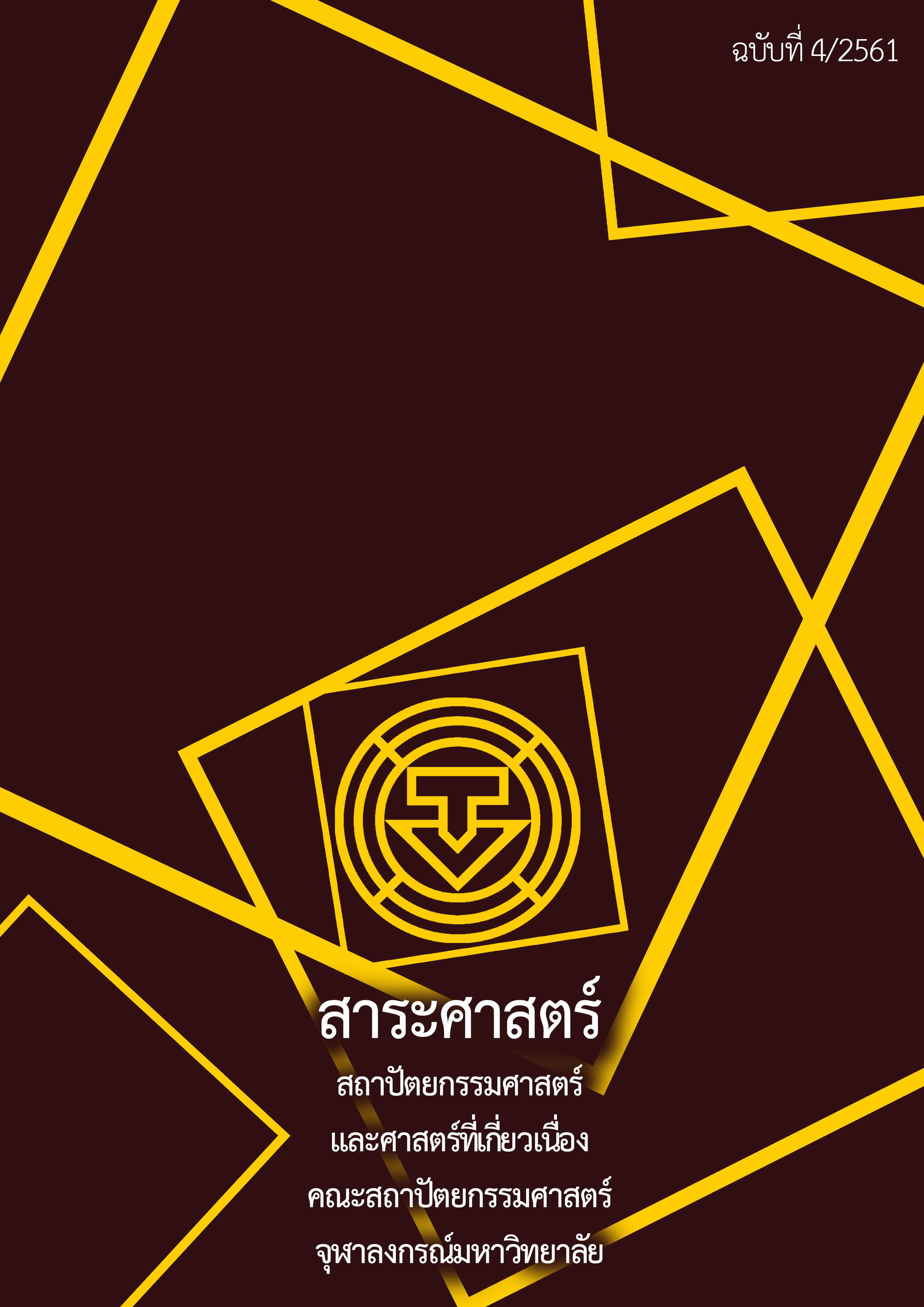Ecosystem Services of Paddy Fields in Isan A Case Study of Ban Ponngam Tambon Ponngam Amphoe Kosumpisai Mahasarakham Province
Main Article Content
Abstract
Paddy fields are man-made agriculture area for growing rice. Apart from producing rice, paddy fields provide other benefits; for example, they are sources of other nutrients due to biodiversity, and they are home to living things as a result of dynamic and seasons in the landscape. At present, the farming process has changed from the rain fed paddy fields (done once a year) to the irrigation paddy fields (done twice a year) in order increase economic outcomes. As a result, the benefits of paddy fields have been reduced. The objective of this research is to study the landscape and dynamic of paddy fields to indicate benefits of paddy fields to men’s survival by investigating into landscape ecology theories to understand the fundamentals of landscape, ecosystem services theories and communal economy theories to understand benefits of landscape and relationship between men and resources, rural development theories and green economic theories to propose rural development guidelines based on resources in order to create sustainability in the community.
In this research, data were collected in the area of Ban Ponngam, Tambon Ponngam, Amphoe Kosumpisai Mahasarakham Province in order to examine the overall components by using field data collection method which included participant and non- participant observations in order to obtain activity data in the area and in-depth interviews in order to identify differences in terms of ecosystem services of rain fed paddy fields and irrigation paddy fields affecting the communal and household economy.
The findings revealed that both types of the paddy fields differed in that the rain fed paddy fields still had benefits and ecosystem services, while the irrigation paddy fields was a change of farming process which was not in compliance with the dynamic of landscape. As a result, the benefits and ecosystem service in the paddy fields were reduced, and it affected the villagers’ ways of life and household and communal economy. Thus, it can be concluded that the benefits and ecosystem services in the paddy fields declined when the irrigation paddy fields were done as a result of economic development and modern technology which contributed to the change since the labor was reduced and the production was increased.
Article Details
References
Benedict, M. A., and Edward, T. M. "Green Infrastructure." Sprawl Watch Clearinghouse Monograph Series 37, 2000.
Boyce, C., and Palena, N. Conducting In-Depth Interviews: A Guide for Designing and Conducting In-Depth Interviews for Evaluation Input Vol. 2. Watertown, MA.: Pathfinder International, 2006.
Eckman, K. Rural Households and Sustainability: Integrating Environmental and Gender Concerns into Home Economics Curricula. Rome: Food and Agriculture Organization of the United Nations, 1994.
Gallent, N., Meri, J., Sue, K., and Dave, S. Introduction to Rural Planning. New York: Routledge, 2008.
Google Earth. "ภาพถ่ายดาวเทียม." สืบค้น 2 กุมภาพันธ์ 2018. https://www.google.co.th/intl/th/earth/.
Heckman, C. W. Rice Field Ecology in Northeastern Thailand Vol. 34. Hague: Springer Science+Business Media Dordrecht, 1979.
Heijman, W. J. M. Rural Resilience as a New Development Concept. n.p.: Serbian Association of Agricultural Economists, 2007.
Natuhara, Y. "Ecosystem Services by Paddy Fields as Substitutes of Natural Wetlands in Japan." Ecological Engineering 56 (2013): 97-106.
Rega, C. Landscape Planning and Rural Development. Cham: Springer, 2014.
Reid, W. V., Harold, A. M., Angela, C., Doris, C., Stephen, R. C., Kanchan, C., Partha, D., and Thomas, D. Ecosystem Service and Human Well-being. Washington, D.C.: World Resources Institute, 2005.
Sepp, K. Landscape Functions and Ecosystem Services, The Rural Landscape. Tartu: Estonian University of Life Sciences, 2010.
Shams, N. "Contribution of Rice Field Ecosytems to Food Security Strategies in Northwest Cambodia." Sustainable Agriculture 29, 4 (2007): 109-133.
Zonneveld, I. S. "The Land Unit - A Fundamental Concept in Landscape Ecology, and Its Applications." Landscape Ecology 3, 2 (1989): 67-86.
ฉัตรทิพย์ นาถสุภา. แนวคิดเศรษฐกิจชุมชน. พิมพ์ครั้งที่ 4. กรุงเทพฯ: โครงการวิถีทรรศน์, 2554.


